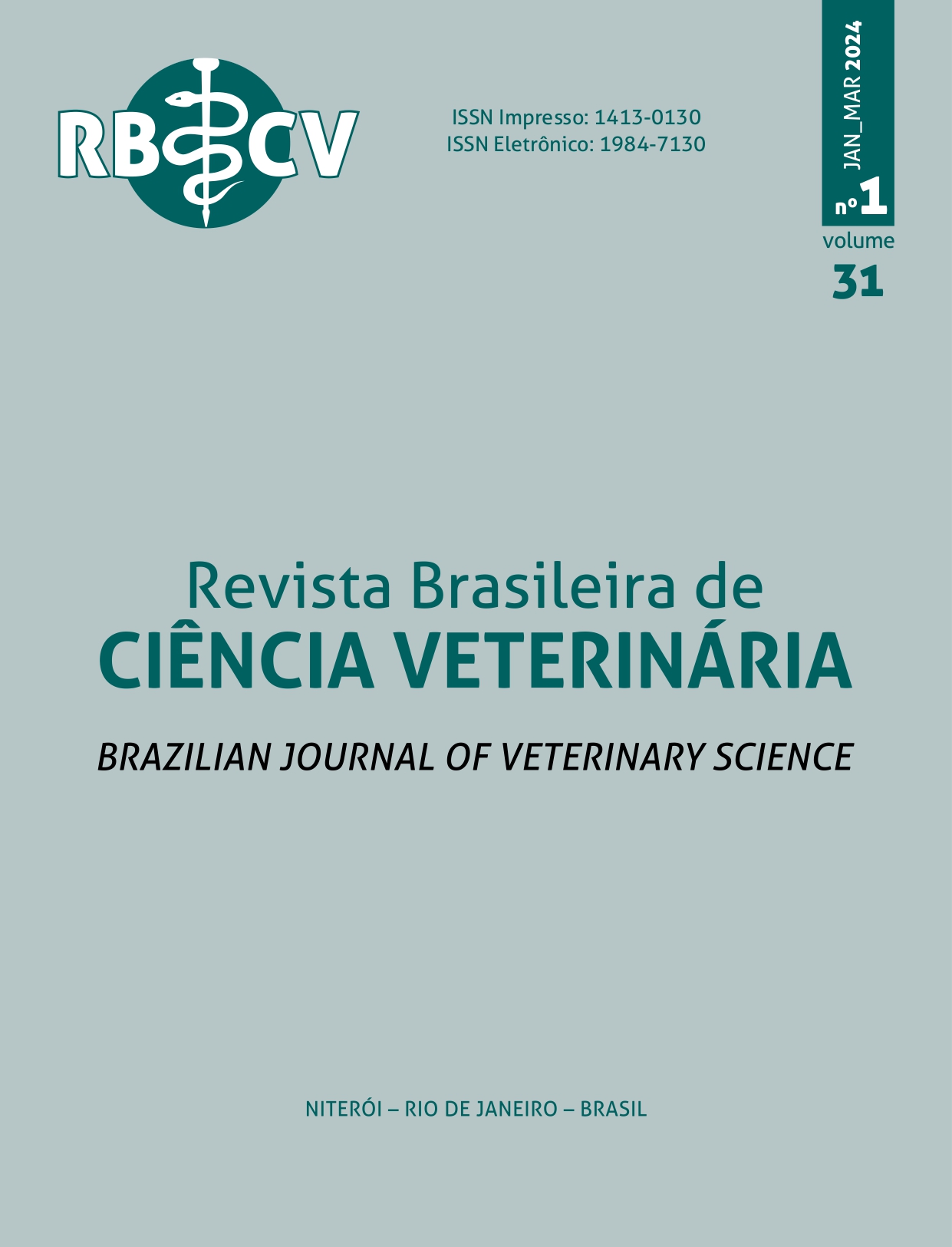Infecção experimental de manon (Lonchura striata domestica) com Salmonella Enteritidis, S. Typhimurium. S. Pullorum e S. Gallinarum
Infecção de passeriforme com Salmonella.
Palavras-chave:
Passariformes, isolamento, tifo aviário.Resumo
This study employed the manon (Lonchura striata domestica) as an experimental model for Passerine birds, which were challenged with four Salmonella serovars: Enteritidis (SE), Typhimurium (ST), Gallinarum (SG), and Pullorum, to assess the impact of these prevalent serovars in industrial poultry farming on Passerines. Salmonella presence was assessed on the body surface (feet), internal organs and fecal excretion, along with an evaluation of clinical signs, susceptibility, and histopathological lesions. Manons were susceptible to all four tested Salmonellan serovars. Clinical signs were absent in birds infected with paratyphoid serovars, while in those that received the typhoid serovars manifested prostration, aversion to flight, and hesitancy in seeking water and food. Mortality was observed only in birds infected with ST, SP, and SG (rates of 14.3%, 28.6% and 39.3% respectively). Regarding organ analysis, the ceca exhibited significant (p=0.05) Salmonella isolation across all serovars and experimental conditions. Salmonella reisolation in manons varied by serovar, with the ceca and feet demonstrating the highest bacterial reisolation for ST. Serovars Gallinarum and Pullorum presented the highest contamination indices in ceca, spleen and liver, ranging from 35.7% to 69.4% of infected birds (p=0.05), surpassing the observed indices in feet (10.7% to 23.2%). Histopathological lesions were similar across all serovars. The experiment model utilized in this study demonstrated the role of Passerines as substantial contributors to active contamination by diverse Salmonella serovars.


